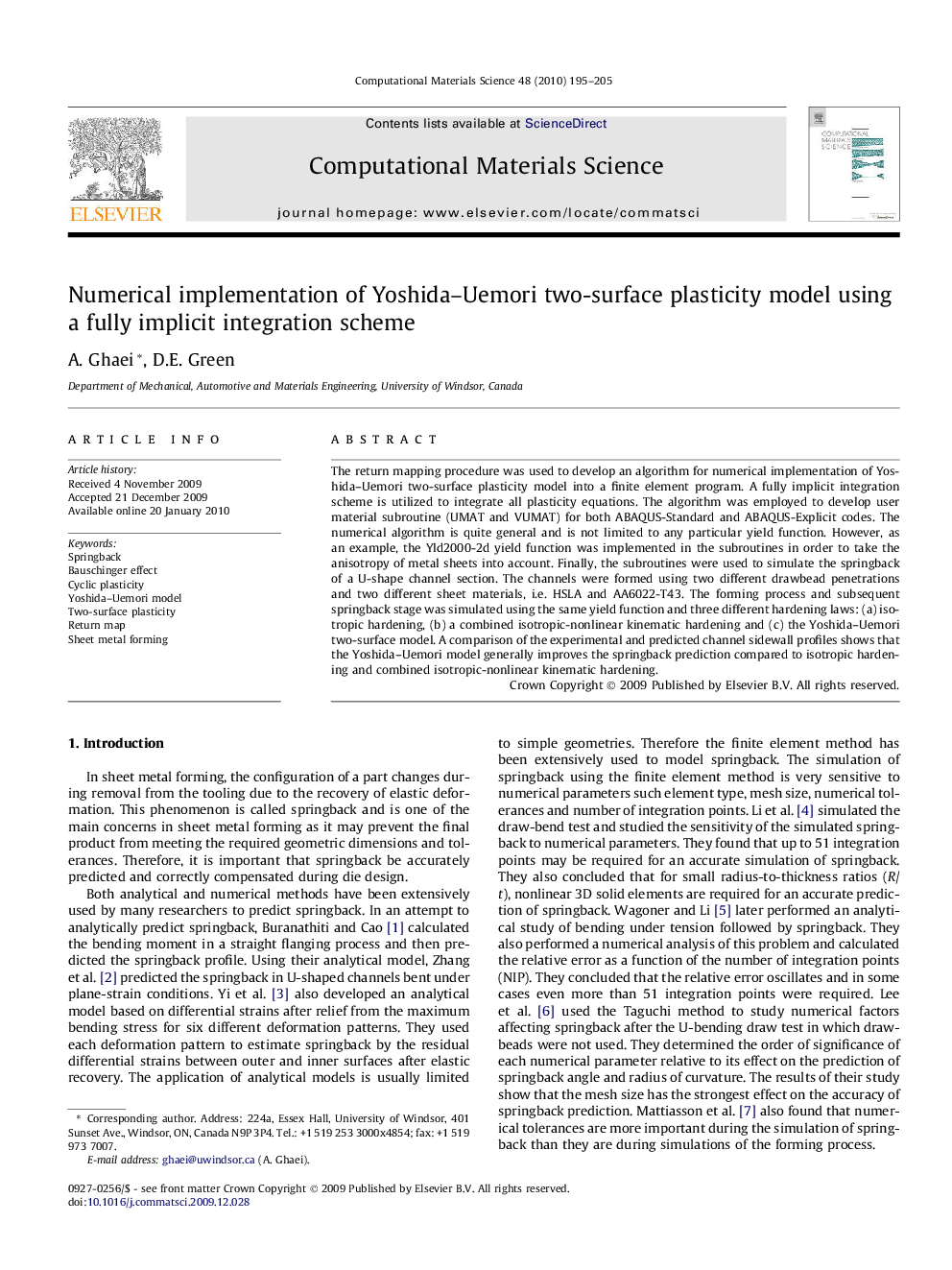| Article ID | Journal | Published Year | Pages | File Type |
|---|---|---|---|---|
| 1562987 | Computational Materials Science | 2010 | 11 Pages |
Abstract
The return mapping procedure was used to develop an algorithm for numerical implementation of Yoshida-Uemori two-surface plasticity model into a finite element program. A fully implicit integration scheme is utilized to integrate all plasticity equations. The algorithm was employed to develop user material subroutine (UMAT and VUMAT) for both ABAQUS-Standard and ABAQUS-Explicit codes. The numerical algorithm is quite general and is not limited to any particular yield function. However, as an example, the Yld2000-2d yield function was implemented in the subroutines in order to take the anisotropy of metal sheets into account. Finally, the subroutines were used to simulate the springback of a U-shape channel section. The channels were formed using two different drawbead penetrations and two different sheet materials, i.e. HSLA and AA6022-T43. The forming process and subsequent springback stage was simulated using the same yield function and three different hardening laws: (a) isotropic hardening, (b) a combined isotropic-nonlinear kinematic hardening and (c) the Yoshida-Uemori two-surface model. A comparison of the experimental and predicted channel sidewall profiles shows that the Yoshida-Uemori model generally improves the springback prediction compared to isotropic hardening and combined isotropic-nonlinear kinematic hardening.
Related Topics
Physical Sciences and Engineering
Engineering
Computational Mechanics
Authors
A. Ghaei, D.E. Green,
